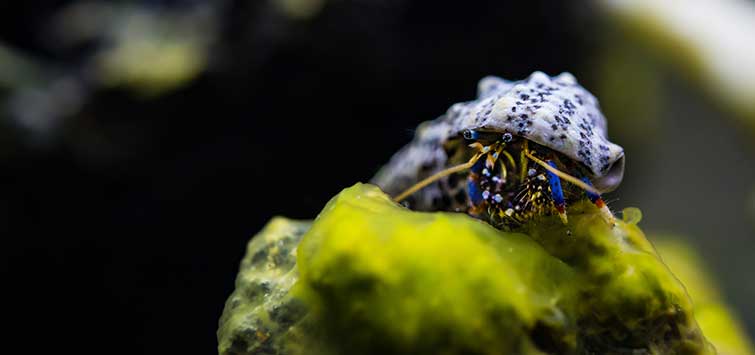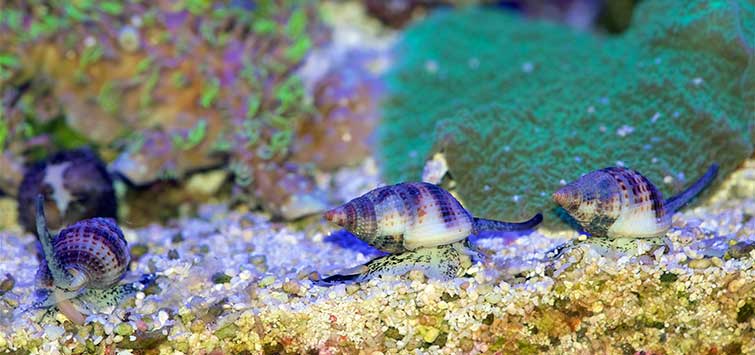Essential Marine Aquarium Algae Eaters

The persistent growth of unwanted algae is a common challenge for marine aquarium hobbyists. Algae can manifest as unsightly green films or fleshy macroalgae that suffocate corals. Maintaining a clean tank and healthy environment for marine life requires diligent algae management. Even with optimal filtration and regular water changes, algae can still appear. The key is to maintain excellent water quality and minimize waterborne nutrients to curb excessive algae growth.
In addition to fish, many invertebrates naturally help control algae growth. These creatures, including crabs, sea urchins, sea slugs, and snails, can greatly contribute to maintaining a balanced aquarium ecosystem. Let’s explore some of these essential algae-eating invertebrates.
Crabs
Crabs can play an essential role in managing algae in larger fish aquariums. Although most crabs are carnivores, the Sally Lightfoot crab (Percnon gibbesi) and mithrax crabs are noteworthy algae eaters. The Sally Lightfoot crab can graze on filamentous algae but may become aggressive as it grows, shifting to a carnivorous diet. Conversely, mithrax crabs, like the emerald (Mithraculus sculptus) and red mithrax (M. forceps), are smaller, effective at controlling bubble algae, and safe for both reef and non-reef aquariums.
Hermit Crabs
Hermit crabs, with their varied diets, can significantly aid in algae control. Algae-eating species, such as the blue-legged (Clibanarius tricolor) and scarlet hermit crabs (Paguristes cadenati), are popular choices for aquarium enthusiasts. They maintain microalgae and filamentous algae, also consuming leftover fish food. While some species, like the Halloween hermit crab, may be deemed unsafe by some, many aquarists have successfully kept them without issues.
Sea Urchins
Sea urchins are known for their effective algae-eating capabilities. Species like rock urchins (Echinometra spp.), long-spined urchins (Diadema spp.), and tuxedo urchins (Mespilia globulus) help control microalgae and filamentous algae in both reef and non-reef aquariums. Despite their utility, caution is advised due to their spines and potential to remove coralline algae, which eventually regenerates.
Sea Slugs
While many sea slugs are unsuitable for aquariums due to their specific dietary needs, the lettuce sea slug (Elysia crispata) is a notable exception. This species can manage algae by maintaining chloroplasts for photosynthesis, similar to corals. However, they require bright light and are vulnerable to being drawn into unscreened intakes.
Snails
Snails provide some of the best options for marine aquarium algae management. The fighting conch (Strombus alatus) and various turban snails (genera Turbo, Trochus, and Astraea) are efficient algae eaters. The fighting conch consumes microalgae and detritus but requires ample food or algae pellets. Meanwhile, turban snails, like the astraea snail (Astraea tecta) and Mexican turbo snail (Turbo fluctuosa), excel at cleaning microalgae and filamentous algae across an aquarium.

Managing the number of algae-eating invertebrates is crucial to ensure they receive sufficient food. Keep a careful eye on their dietary needs to prevent starvation and ensure a balanced environment without the risk of predation from larger fish.
Conclusion: Integrating algae-eating creatures into your marine aquarium can effectively control unwanted algae, fostering a healthier and more aesthetically pleasing environment. Carefully select and manage invertebrates like crabs, urchins, and snails, tailoring your choices to meet the specific needs of your aquarium. By doing so, you'll cultivate a thriving aquatic ecosystem.

